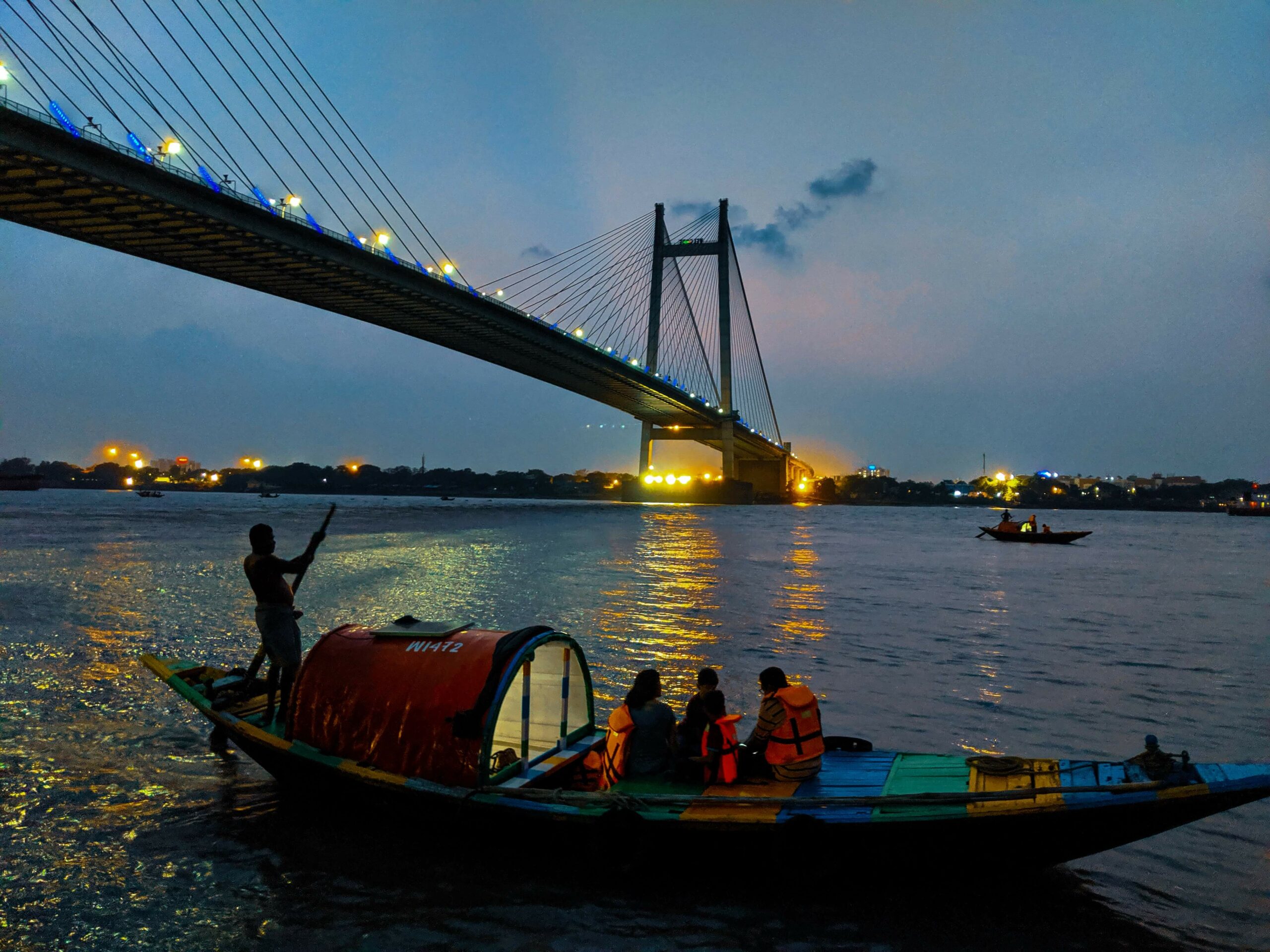India is a country full of historical traditions that have lasted to this very day. They are also home to numerous cultures, one of the most notable of which is the Bengals.
It should be no surprise that many Bengali wedding traditions have survived the test of time. Much like in other cultures, the Bengali bride and groom express their love and affection for each other through several rituals.
Today, we explore 15 sacred rituals, so you can look and do your best just in case someone invites you to one of those glorious weddings!
15 Bengali Wedding Traditions and Rituals
1. Blessings (Adan Pradan)
Every great wedding starts with a customary blessing from family and friends who want to see both parties happy for the rest of their lives. As per the ritual, the groom’s family will visit the bride, bearing gifts and blessings as a token of acceptance.
The bride’s family does the same thing at a later date, and both bride and groom receive blessings from the sacred rice (Dhan). The gifts that the family brings the bride are the jewelry and heirlooms she will wear to the ceremony.
2. Friends of the Bride and Groom (Aai Budo Bhaat)
Enjoying quality time with your friends and loved ones before You tie the knot is a tradition that numerous cultures observe and respect. Bengali people are no different because, during this ritual of Nitbor and Nitkone, their closest companions stay by the bride and groom’s side until the wedding.
This custom holds great significance because it is somewhat unique to Bengali society. It would be akin to the best man in the maid of honor staying by the bride and groom’s side during a traditional American wedding.
The bride and groom’s close friends do their best to ensure both parties are ready for the big event waiting for them. The devotion that these loved individuals show makes this a truly special custom.
3. Donning Marriage Symbols (Shankha Pola)
As the wedding draws near, the bride will don sacred Bangles the night before, made of a conch shell and red coral, shankha, and pala, respectively. The bride only does this in her family’s company as it is a private affair.
Only her husband can see her outside her family with the ceremonial wedding accouterment. This custom is one of the many that shows a bride’s devotion to her husband.
4. The Pre-Wedding Meal (Dodhi Mangal)
Both the bride and the groom will have a meal before the wedding. The elders will serve them flattened rice (chuda) mixed with sweet yogurt (mishit doi). Once they finish eating, they will fast until the ceremony ends.
Fortunately, they do not have to fast for too long because they eat this meal during the wedding daybreak. However, they can have small sweets and water if they choose.
5. Pay Respects to the Forefathers (Nandi Mukh)
It is always proper to pay respects to the ones who have come before you because they have paved the way for you so you can enjoy the pleasures you are receiving.
Bengali culture pays their respects to the ancestors by sitting with the eldest male member of both families and performing a Vedic ritual. This ceremony is a sacred affair and requires a priest, along with having the bride wear a cotton saree.
6. Applying Turmeric (Gaye Holud)
Everybody knows the health benefits of turmeric, including the Bengali elders. During this tradition, the groom’s body receives a spread of turmeric at a specific time. The herb is then recycled and smeared onto the bride’s skin at a later time.
The bride is also gifted another yellow and red saree consisting of cotton. She must wear this garb before she starts the ritual. The really fun part about this ritual is everyone invited – usually the bride and groom’s family – starts covering each other with Haldi.
The Haldi smearing is a custom borrowed from northern Indian traditions.
7. The First Look (Subho Distri)
The First Look may seem like a cute little game of peek-a-boo, but it is a starch tradition within the Bengali culture. the bride, held by her brothers, and the groom arrive in the seven circles. The bride is holding up the betel leaf in front of her face, and she slowly removes it so the groom can have a peek at her.
This preview is a significant point of the wedding because it is the first time the bride and groom can see each other’s faces since agreeing to marry. The groom can admire how beautiful the bride is, while the bride can look her future husband in the eyes lovingly.
8. The Holy Fire (Yagna)
Nothing is as strong as a bond that has gone through the fire. The Holy Fire is a ritual the bride and groom perform while sitting beside a priest facing a sacred flame.
The bride and groom perform this godly session to allow the god of fire, Agni, bare witness to their union. Agni is one of the many sacred guests invited to the wedding.
9. An Offering (Anjali)
In this Bengali wedding tradition, the couple gives an offering of puffed rice to a sacred fire. The bride’s brother, if she has one, gives her the puffed rice. Together, the bride and groom carefully pour the offering into the Yagna fire.
This offering will appease the God of Fire and allow them to continue their wedding without a hitch. After retrieving the puffed rice from her brother, the bride and groom cup the grain in their hand and throw it into the flame.
To do this gracefully, the groom must stand behind a bride and cup her hands inside of his hands while she holds the rights. Once they have reached his position, they slowly pour in the rice, ensuring every last bit of it gets inside the flame.
10. Smearing Vermillion (Sindoor Daan)
Once the ceremony proper has concluded, the groom will smear Vermilion or Sindoor into the parting hair of the bride. Depending on the family tradition, he can use certain utensils to complete this task.
- A rice utensil (kunke)
- Mirror (darpan)
- A coin
- A ring
After completely spreading the vermillion on his new wife, the bride’s face will grace a new saree gifted by the groom’s parents. This new garb comes with a unique name, the lajja-bastra.
11. Saying Goodbye (Biday)
During the post-wedding ceremonies, numerous gatherings breed a joyous time, which allows both the bride and groom to get to know their new family. Once the singing and dancing are over, the bride will say farewell to her paternal family.
In some families, the bride will leave the following day after the wedding, but in others, the groom takes her home during the sunset of their wedding day. Before they leave, the couple will touch each elder member of her family’s feet.
During which, the bride will place rice on the head of her mother.
12. Bringing Home the Bride (Bodhu Baran)
Upon arriving at her newfound home with her now husband, the bride expects to see a pot of boiling milk. The overflowing milk is a symbol of a household that has everything they need for years to come.
The groom’s mother will welcome her new daughter-in-law with open arms while holding a Kalash filled with water in one hand while having fish in the other. The bride will walk on a container filled with Alta and milk before stepping on a white cloth.
The footprints left by the Alta-milk combo are symbolic of the Goddess Lakshmi.
13. Separation (Kaal Ratri)
After all is said and done, the two will seek blessings from The older generation who has imparted gifts to them during the ceremony. The bride’s mother-in-law will give her a special gift called the Ioha.
This bangle bracelet consists of iron, and it is customary for the bride to wear this at all times. After exchanging the gifts, the bride and groom must remain separate for a night.
The Kaal Ratri is a unique part of Bengali culture, forcing the bride and groom to be without each other for one more agonizing night.
14. Accepting the Duties (Bou-Bhat)
After completing the night of separation, the bride will eat cooked rice in her new home. The groom will offer her food and tell her he is now responsible for making her food and caring for her clothes.
The groom accepts these duties for his new bride as he will care for her until death. Once the responsibilities are assumed, the groom and his family will arrange a big reception to which all the bride’s family and friends receive invites.
15. Night of Union (Phool-Sajya)
Now comes some precious alone time for the bride and groom after all the parties have concluded and every guest has left. Customs will lead the two newlyweds to a bed decorated with flowers, which is one of the more romantic Bengali wedding traditions.
The bride typically chooses to change her saree and put on some floral jewelry. The groom will don some cotton kurta-pajama, and they will retire for the night, happily married!




